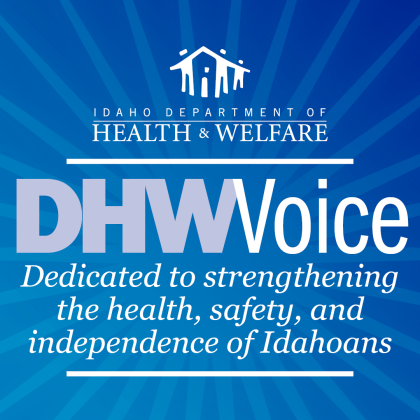Shedding light on the impact of viral hepatitis and encouraging testing and vaccination during Hepatitis Awareness Month
May is Hepatitis Awareness Month, and May 19 is Hepatitis Testing Day. This is a great reminder to learn about the dangers of viral hepatitis, how to prevent the spread of the disease, and what to do if you become infected.
Hepatitis is an inflammation of the liver that is often caused by a virus. The most common types of viral hepatitis's are A, B, and C. Both hepatitis B (HBV) and hepatitis C (HCV) can lead to liver cirrhosis, liver cancer, and viral hepatitis-related deaths. In Idaho, chronic liver disease is the tenth leading cause of death.
According to the U.S. Department of Health and Human Services, an estimated 850,000 people in the United States are living with HBV, while the estimated number of people living with HCV ranges between 2.4 and 4.7 million. Unfortunately, a large majority of people don’t even know they are infected. The most common symptoms of hepatitis A, B, and C can include fever, fatigue, dark urine, abdominal pain and vomiting, jaundice, loss of appetite, and clay-colored bowel movements.
Anyone can get HCV. However, the Baby Boomer generation (1945-1965) are five times more likely to have chronic HCV than any other living adult generation. New cases of HCV are on the rise among adults 20-39 years of age, according to the Centers for Disease Control and Prevention (CDC).
Universal HCV screening is recommended for adults 18 years and older and all pregnant people during each pregnancy. Routine screening is recommended for people with ongoing risk factors.
The hepatitis C virus (HCV) is usually spread when someone comes into contact with blood from an infected person. This can happen through:
• Sharing drug-injection equipment. Today, most people become infected with HCV by sharing needles, syringes, or any other drug equipment used to prepare and inject drugs.
• Being born to a mother who is HCV positive.
• Needlestick injuries in health care settings.
• Sexual contact with infected partners. While uncommon, HCV can spread during sexual intercourse, though it has been reported more often among men who have sex with men.
• Unregulated tattoos or body piercings.
• Sharing personal items, such as glucose monitors, razors, nail clippers, toothbrushes, and other items that may have come into contact with infected blood, even in amounts too small to see.
The best way to protect yourself from HAV and HBV is to get vaccinated. The HAV vaccine has been routinely recommended for children during the past 25 years. There are many Idahoans over the age of 30 who were not vaccinated as a child and are susceptible to acquiring HAV.
The HBV vaccine is recommended for all infants, all children or adolescents younger than 19 years of age who have not been vaccinated, all adults aged 19-59 years, and adults aged 60 years or older with risk factors for HBV infection. Adults who are 60 years or older without known risk factors for HBV may also receive an HBV vaccine.
There is not a vaccine for HCV. However, HCV is curable with a short course (8-12 weeks) of treatment. Being cured for HCV significantly improves the chances of living a longer and healthier life and prevents the ongoing transmission of the virus.
According to data compiled at the Get Healthy Idaho website, there were 722 chronic HCV cases reported, 62 chronic HBV cases reported, and 6 HAV cases reported in Idaho in 2023.
The HIV, STD Idaho Hepatitis Prevention Program and the CDC help promote awareness of viral hepatitis and encourage people to get tested to improve the overall health of affected Idahoans.
Resources:
Visit the CDC page on Hepatitis: https://www.cdc.gov/hepatitis/
Visit the Hepatitis Awareness Month CDC page: https://www.cdc.gov/hepatitis/awareness/HepatitisAwarenessMonth.htm
Find testing services near me: https://hshslocator.dhw.idaho.gov/prevent/default.aspx
For more information on Hepatitis: https://healthandwelfare.idaho.gov/health-wellness/diseases-conditions/hepatitis
The Idaho Department of Health and Welfare is dedicated to strengthening the health, safety, and independence of Idahoans. Learn more at healthandwelfare.idaho.gov.

Join the Discussion
Please note the following terms of participation in commenting on the DHW Voice blog.
To ensure a productive discussion you agree to post only comments directly related to this post and to refrain from posting obscenities; threatening, abusive or discriminatory language; sexually explicit material; and other material that would violate the law if published here; promotional content; or private information such as phone numbers or addresses. DHW reserves the right to screen and remove inappropriate comments.